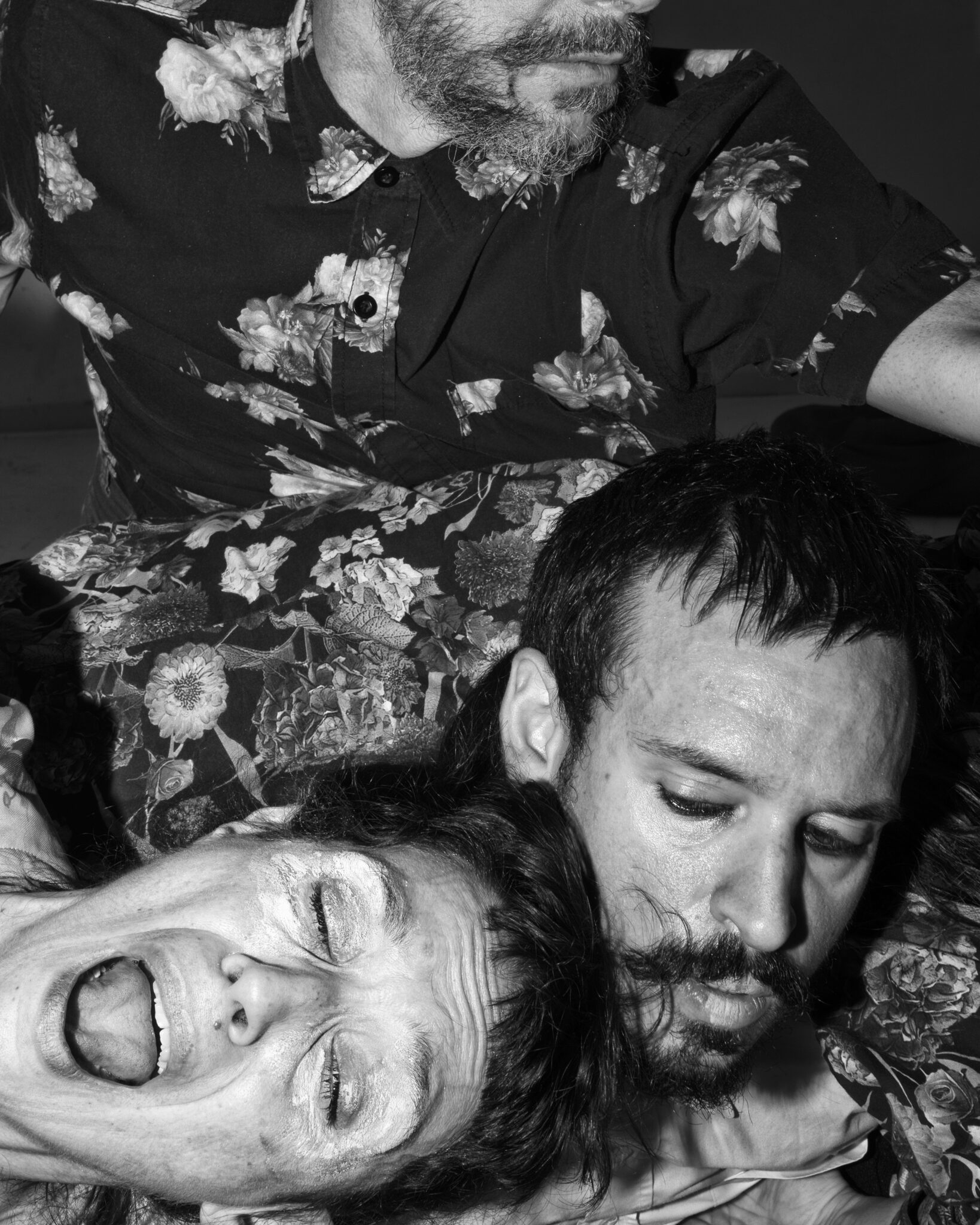Charles Baudelaire’s work in Les Fleurs du mal is a single, great “perforated” story. A narrative of situations created through images, with fractures, holes, and zones where each of us can find ourselves, discovering common traits and shared vulnerabilities. The collection of poems speaks of the beauty of the imperfect bodies of characters on the fringes of society, outcasts, borderline individuals, who become magnificent creatures through a new gaze. This aligns closely with the philosophy of Balletto Civile, which has always crafted its works by lending bodies to a lyrical narration of protagonists who are anti-heroes.
The show, endowed with a strong narrative rhythm determined by the poet’s texts and original writings, stages a struggle between dance and the poetic act as a possible rewriting of the world.

Six figures on stage represent the central themes: the poet, beauty, time, boredom, exile, revolt, the wound, the city, and finally, poetry itself.
The scenic space, bare and material, welcomes the characters as in a single luminous and sonic installation, where the bodies, through geometries of existences on the margins, produce strong, overwhelming images that, like cuts in a canvas, seek to leave a graphic mark on the viewer’s retina. This is achieved through a language that is initially solitary and then shared, confusing personal feelings with the community’s shared wounds.
The artist is able to see all that is wonderful but cannot avoid feeling the world’s terrors on their skin; we cannot hide from this risk. Baudelaire is the first contemporary poet who recorded on his skin not only the heights but also the sacrifice and pettiness to which the artist is subjected, and he made this reflection a work of art.



